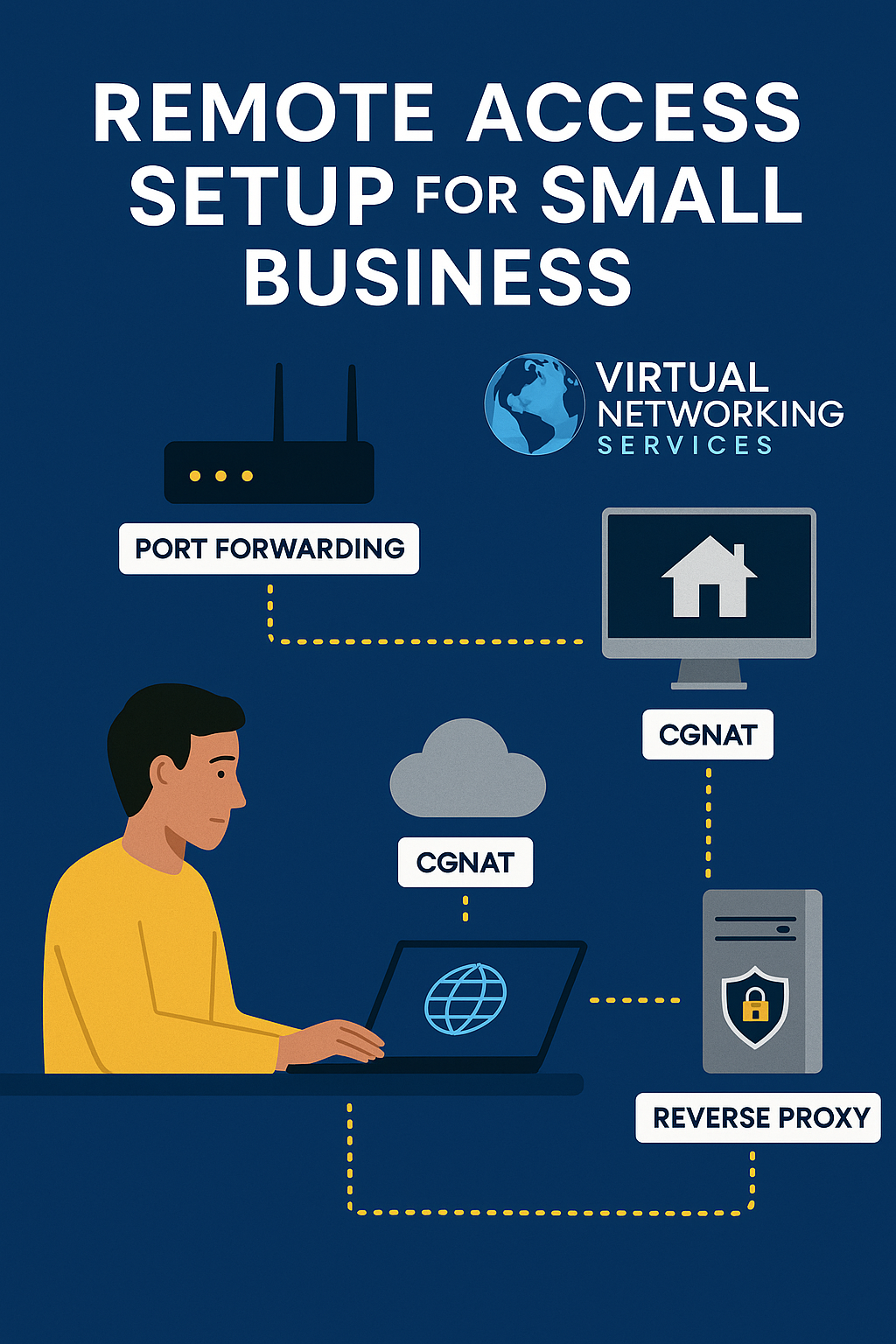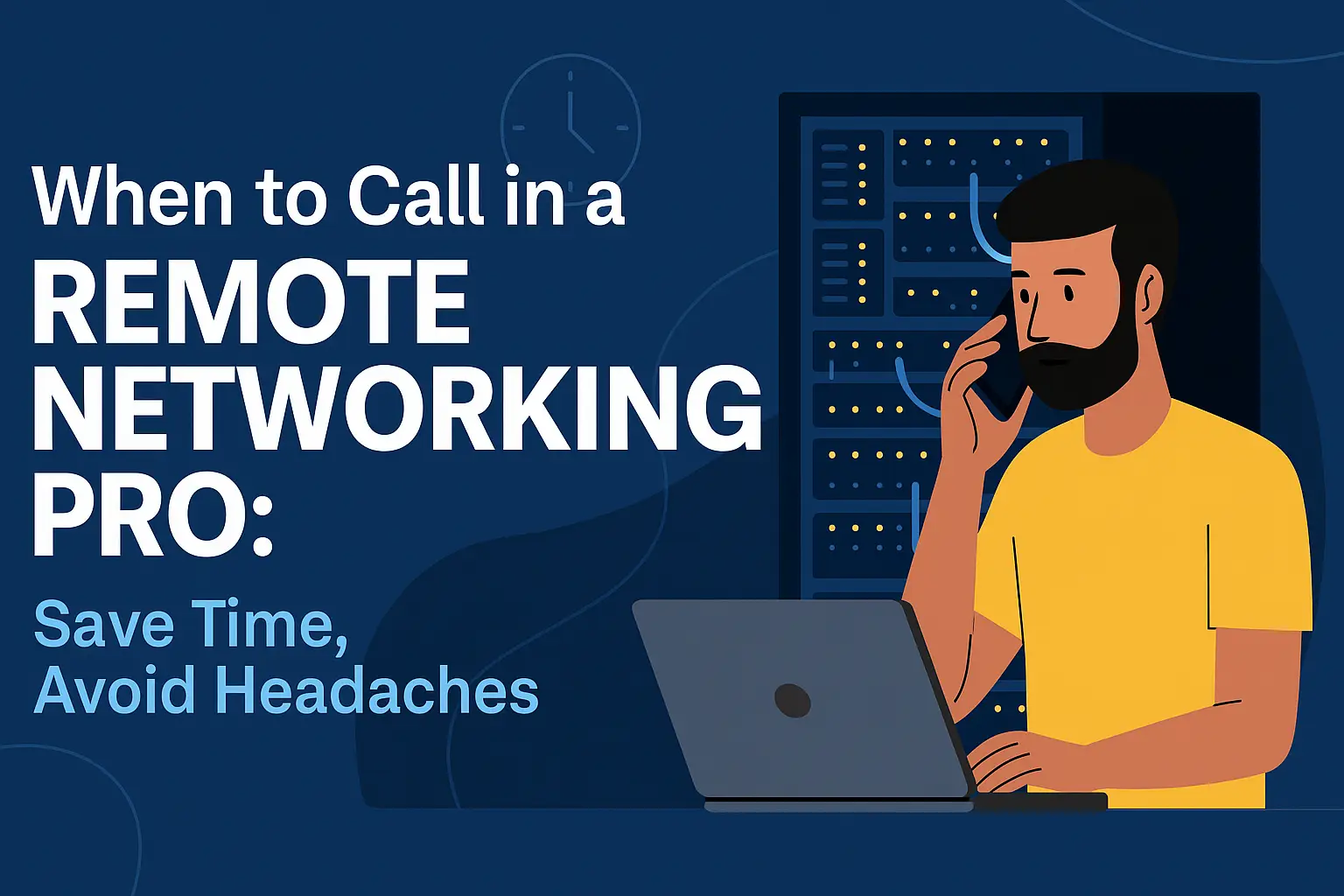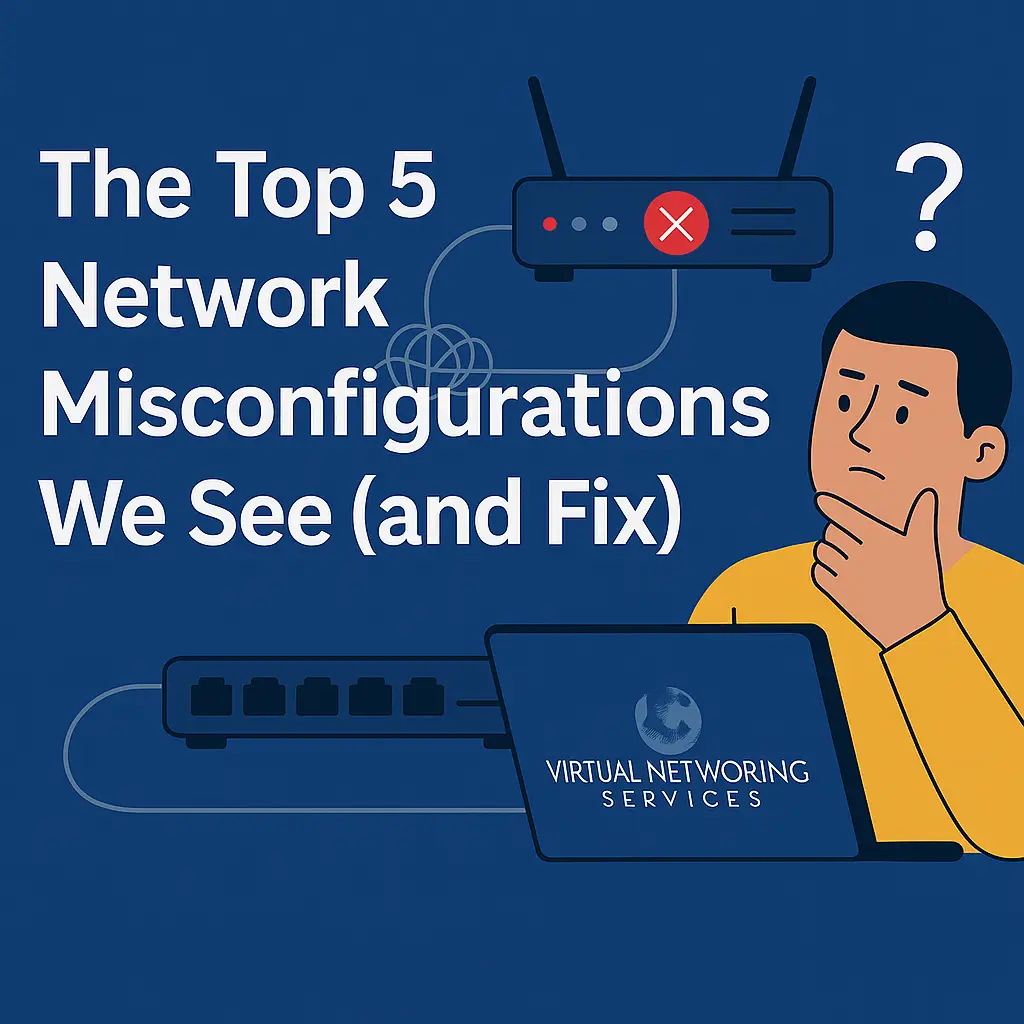Remote Access Setup for Small Business: A Guide to Doing It Right
In today’s connected world, remote access isn’t just a luxury it’s a necessity. Whether you need to manage your office computer from home, check security systems while traveling, or assist clients from anywhere, setting up remote access is a game-changer for small businesses.
But between port forwarding, DNS, CGNAT issues, and security concerns, it’s easy to feel overwhelmed. That’s why we’re breaking it all down in this guide.
Why Remote Access Matters for Small Business
Small businesses often don’t have a full IT team on standby. When something breaks, you either wait for someone to show up; or you remote in and fix it fast. Whether it’s accessing your point-of-sale system after hours, or managing a client’s NVR or router, reliable remote access keeps you efficient and in control.
Understanding the Basics: Port Forwarding & Reverse DNS
Traditionally, setting up remote access starts with port forwarding. This tells your router to allow outside traffic to reach a specific device on your local network; like a camera system, a computer, or a NAS device.
To make this cleaner, you often pair it with reverse DNS (rDNS). rDNS maps an IP address back to a domain name (like remote.yourcompany.com), so instead of memorizing numbers, you can connect using a friendly URL. This also improves legitimacy for services like email and security platforms.
However, this setup assumes you have a public IP address and full access to your router. Which brings us to a common hurdle…
What is CGNAT and Why It Causes Problems
Many ISPs especially in apartment buildings, multifamily units, or rural areas; use Carrier-Grade NAT (CGNAT). This means your internet connection shares a public IP with hundreds of others, and you no longer have the ability to open ports or set custom rules.
If you’ve ever tried to forward a port only to realize it doesn’t work, CGNAT is likely to blame. If you’re working with a carrier-grade NAT (CGNAT), standard port forwarding won’t work; your public IP is shared with other users. This is common in residential or lower-tier business plans. Here’s a deeper dive into why CGNAT matters from RIPE NCC.
Reverse Proxy: A Smarter, More Secure Workaround
One workaround for CGNAT is to use a reverse proxy, which acts as an intermediary that forwards requests to devices behind a NAT. Cloudflare explains how reverse proxies work and why they’re useful for remote access.
A reverse proxy is a middleman that sits between the internet and your local device. Instead of the outside world reaching directly into your network, the device (like your NVR or server) connects outbound to a cloud-based proxy. From there, authorized users can securely log in and access the device; without ever exposing internal IPs or open ports.
Reverse proxies also let you:
Serve multiple services (NVR, access control, file sharing) from one IP
Use custom URLs like
access.yoursite.comfor easy brandingAdd SSL (HTTPS) for secure encryption
Control who gets in with passwords, 2FA, or IP whitelisting
Some great free tools to consider:
Cloudflare Tunnel – great for overcoming CGNAT and adding HTTPS
Nginx Proxy Manager – flexible local reverse proxy
FRP (Fast Reverse Proxy) – lightweight and effective for simple tunnels
Real-World Use Case
One of our small business clients needed access to their office DVR system while on vacation. Their ISP was using CGNAT, and port forwarding failed. We set up a Cloudflare Tunnel reverse proxy — allowing them secure, web-based access to their DVR using a custom domain with HTTPS. No extra hardware, no headaches and it worked even from their phone.
Final Thoughts
A proper remote access setup for small business is about balancing speed, security, and simplicity. Whether you use traditional port forwarding or modern tools like reverse proxies, the goal is the same: quick access, no stress.
At Virtual Networking Services, we help small businesses, property managers, and low-voltage installers set up remote access the right way; safely and professionally. If you need help making your systems work from anywhere, we’re just a message away.





